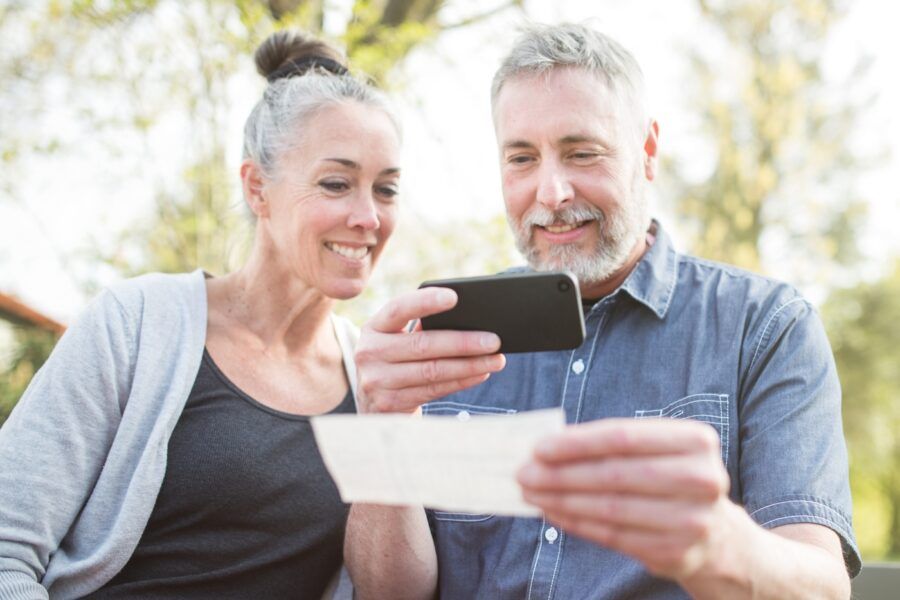In this article:
Do you know if your current bank account balance can cover all of your upcoming expenses? If you're unsure where your balance stands, you could overdraw the account, which may result in fees and other difficulties.
Regularly checking your balance can keep your finances running smoothly and help you spot potential errors and signs of fraud. It's pretty easy too. Here's a rundown of seven ways to check your bank account balance plus some of the pros and cons to each approach.
Find Digital Checking Accounts
1. On Your Bank's Website
Most banks and credit unions offer online banking to help you manage your accounts through a secure website. Every financial institution has a different setup, but you'll typically head to your bank's website and register for online banking access. This involves providing your account information and setting up a username and password.
Once you log in, look for a dashboard that shows a list of your accounts, and click the account you want to check. Here's where you can view your account balance, look through your transaction history and use any other tools offered by your institution.
While this method involves taking a few steps upfront, it's generally safe to bank online and may be your best bet if your bank doesn't have a branch presence or changed its hours due to the pandemic.
2. Through Your Banking App
Your financial institution may also offer a banking app as part of its online banking services. Get started by downloading the app to your smartphone and entering your sign-in details. To prove your identity, you may need to use biometric authentication or type in a code that's texted to you.
Once you're signed in, you'll typically see a dashboard that lists out your accounts. Choose an account to look over, and your current balance and recent transactions should be easy to locate.
While some banking apps may not be as responsive or feature-rich as a bank's website, this option is helpful when you need to use tools only available in the app. For instance, you may be able to deposit checks by uploading a photo to the app and typing in some details.
3. At an ATM
To check your bank account balance at an ATM, insert your debit or ATM card into the card slot. Then enter your PIN and choose "balance inquiry" or "check balance." The ATM will pull up your account balance and may also print it on a receipt. Some machines charge for this convenient feature, but there are ways to avoid ATM fees.
4. Over the Phone
Another option for checking your balance is by calling your financial institution. You can typically find the phone number listed on your debit card or on the bank's customer service or "Contact us" webpage. Call the number and follow the prompts to check your account balance.
The bank may ask for your account number, pose security questions and require a PIN before providing the information. You'll also need to call during certain hours if you want to talk with a representative, though many banks have automated systems for 24/7 service.
5. With Bank Statements
Most banks and credit unions provide monthly account statements either electronically or by mail. The statement includes your balance and a list of the transactions you made during the statement period, which usually covers the previous 30 days. This option may be helpful if you can't access the internet. But the information will be outdated if any transactions have gone through since the statement period ended.
6. Through Account Alerts
Bank account alerts are digital notices that your financial institution sends you by text message, email or push notification. If your bank or credit union offers them, you'll usually need to sign into your online banking portal, find your account settings and look through your notification options to manage your alerts.
These alerts are usually customizable. For instance, you may be able to receive a daily notification of your available balance or get a message when your balance dips below a certain dollar amount.
7. With a Bank Teller
You can also check your account balance in person, as long as your financial institution has brick-and-mortar branches with a location near you. If you have accounts at a credit union, you may have access to a shared branch network.
Once you get to the branch, you'll usually need to stand in line to speak with a teller and then provide your debit card to verify your identity. This approach takes more legwork, but it's a good option if you have questions about your account or need help.
The Bottom Line
Calling the bank or visiting a branch could be a good option if you need to ask questions—as long as you're OK with the extra legwork involved. Checking your monthly statement is also an option, though your information could be outdated. And ATMs provide information on the go if you're comfortable with paying potential fees.
Online banking, mobile apps and account alerts are usually the quickest and easiest methods, and they provide the most up-to-date information about your account balance for free.
If you're thinking about opening a new checking account, the Experian Smart Money™ Digital Checking Account & Debit Card can help you build credit without debt by automatically linking to Experian Boost®ø, which gives you credit for eligible bill payments after three months of payments. You'll also pay no monthly fees¶ for Experian Smart Money, have access to more than 55,000 fee-free ATMs worldwide** and could receive your paychecks up to two days early when you enroll in direct deposit†. You can get an Experian Smart Money Account through a free or paid Experian membership, which also gives you access to your FICO® Score☉ , Experian credit report and more. See terms at experian.com/legal.


